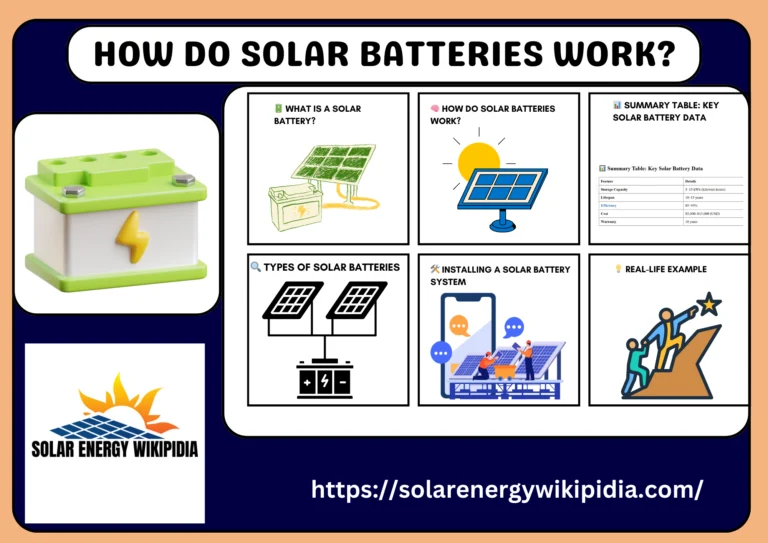
The best power inverter for home use with this comprehensive guide. How to select, install, and maintain a power inverter to ensure reliable energy in your home.
Imagine you are sitting at home, watching your favorite show or working on your laptop, when suddenly, the power goes out. If you’ve ever experienced a power outage, you know how frustrating it can be. But what if there was a way to keep your essential devices running during those unexpected blackouts? That’s where a power inverter for home comes in.
A power inverter is a device that converts DC (direct current) from a battery into AC (alternating current), the type of electricity that powers most home appliances. It’s an essential tool for homeowners who want a reliable backup power system. In this guide, we will dive into everything you need to know about power inverters for home use—from how they work, to how to pick the right one, and everything in between.
Table of Contents
Summary Table: Key Points to Know About Power Inverters for Home
| Feature | Details |
| What It Does | Converts DC to AC power for home appliances |
| Types | A pure sine wave, a modified sine wave, and a square wave |
| Power Range | 100W – 5000W (or more) depending on the inverter |
| Common Uses | Backup power, solar power systems, RVs |
| Installation Difficulty | Varies from easy to complex (depending on size) |
| Cost Range | $50 – $2000+ (depending on size and features) |
What Is a Power Inverter for Home Use?
A power inverter for home use is an electrical device that converts DC (direct current) electricity into AC (alternating current) electricity. Why does this matter? Because most home appliances, from refrigerators to televisions, run on AC power, while DC power is typically produced by batteries or solar panels.

In short, if you want to use a battery (or any DC-powered source) to run your home devices, a power inverter is necessary. It ensures that your devices get the right kind of electricity.
Why You Might Need One
Whether you’re facing regular power outages, living off the grid, or using a solar power system, a power inverter for home use is a game-changer. Here are some scenarios where a power inverter might come in handy:
- Backup Power: A power inverter can be part of a backup system to keep lights, refrigerators, and other crucial devices running during blackouts.
- Solar Energy Systems: If you’ve gone green and installed solar panels, you’ll need an inverter to convert the energy from the panels into usable electricity.
- RVs and Mobile Homes: When you’re on the go, a power inverter lets you use your RV’s battery to power electronics like laptops and small appliances.
- Remote Locations: In areas where the power grid isn’t reliable, an inverter helps maintain power using alternative sources like wind or solar energy.
How Does a Power Inverter for Home Work?
At its core, a power inverter for home works by transforming the DC voltage stored in batteries into AC voltage, making it usable for appliances. The following is a simplified description of how the process works:
- DC Input: The inverter receives DC electricity from a battery or solar panel.
- Conversion: Inside the inverter, the DC is processed and converted into AC.
- Output: The AC power is then sent to your home appliances, where it powers everything from your lights to your fridge.
It’s important to understand that the quality of the AC power produced can vary based on the type of inverter you choose.
Types of Power Inverters for Home Use
When shopping for a power inverter for home, you’ll come across three main types:
1. Pure Sine Wave Inverters
These inverters produce a smooth, high-quality output that mimics the AC power provided by your utility company. Pure sine wave inverters are the best choice for sensitive devices like computers, medical equipment, or home theater systems.
- Pros: Clean, reliable power, works with all electronics.
- Cons: More expensive compared to other types.
2. Modified Sine Wave Inverters
Modified sine wave inverters are more affordable but produce a lower-quality output. While they can power most home appliances, they may cause issues with devices that rely on a pure sine wave, like motors or electronics with delicate components.
- Pros: Cost-effective, works with basic appliances.
- Cons: Can interfere with or damage sensitive electronics.
3. Square Wave Inverters
The least common and least efficient type, square wave inverters produce a jagged waveform. They are outdated and typically only used in low-power applications like simple lighting.
- Pros: Cheapest.
- Cons: Very inefficient, may damage sensitive devices.
Key Factors to Consider When Choosing a Power Inverter for Home

There is no one-size-fits-all answer when selecting a power inverter for home use. Several factors can influence your decision. Here are some important considerations:
1. Power Rating
The power rating of an inverter is usually given in watts (W). You need to choose an inverter that can supply enough wattage for your devices. For example, if you’re running a fridge (which uses about 600W), a small inverter won’t be enough. Aim for an inverter with a power rating that exceeds your total power needs.
2. Battery Type and Capacity
Power inverters work with batteries, and different battery types have varying capacities. Ensure your battery has enough charge to run the inverter for the desired amount of time. For home use, a deep-cycle lead-acid battery or lithium-ion battery is ideal.
3. Efficiency
The efficiency of an inverter is its ability to convert DC power into AC power. Efficiency determines how much energy is lost during the conversion process. Look for an inverter with an efficiency rate of at least 90% to ensure minimal energy wastage.
4. Safety Features
A quality power inverter for home should have built-in safety features, including overload protection, short-circuit protection, and temperature control. These features prevent damage to your inverter and home appliances.
How to Install a Power Inverter for Home Use
Installing a power inverter for home use can be a DIY project, but it depends on the complexity of the setup. The following is a general step-by-step guide for a basic installation:
- Choose a Suitable Location: Ensure the inverter is installed in a dry, cool place with plenty of ventilation.
- Connect the Battery: If you’re using a DC battery, connect it to the inverter using the appropriate cables.
- Connect the Inverter to Your Appliances: Connect the inverter’s output to your home appliances or electrical panel using an alternating current wiring setup.
- Test the System: After installation, test the inverter by running a few appliances to ensure it works properly.
If you are not comfortable with electrical work, consider hiring a professional to install the system for you.
Maintenance Tips for Power Inverters

To ensure that your power inverter for home continues to perform well, regular maintenance is essential. Here are a few maintenance tips:
- Clean the Inverter: Dust and debris can block airflow and cause the inverter to overheat. Regularly clean the vents and fans.
- Check the Battery: Keep an eye on the health of your battery. Make sure it’s charged and replace it if necessary.
- Monitor Performance: Pay attention to how the inverter performs over time. If you notice a drop in efficiency or reliability, it might be time for a replacement.
FAQs: Power Inverter for Home
1. Can a power inverter for home run an entire house?
A power inverter for home can power certain appliances, but to run an entire house, you’d need a high-capacity inverter, combined with sufficient battery storage and proper wiring.
2. How long can a power inverter run?
The duration a power inverter can run depends on the size of the inverter, the capacity of the battery, and the power usage of connected devices. Generally, expect anywhere from a few hours to a full day with adequate storage.
3. Are power inverters noisy?
Most inverters make a slight humming noise, but higher-quality inverters tend to operate quietly. Choose a unit with good cooling to minimize noise.
4. Do I need a pure sine wave inverter for my home?
A pure sine wave inverter is the best option for powering sensitive electronics like computers and medical devices. For basic appliances, a modified sine wave inverter should suffice.
Final Thoughts
A power inverter for home use is an excellent investment if you are looking for backup power, want to integrate solar energy into your home, or just want more control over your energy usage. With the right information, you can select an inverter that meets your needs and provides reliable power for your home.
In summary, power inverters offer peace of mind during power outages and can help you tap into renewable energy sources like solar. Whether you’re powering a few lights or running an entire home, there is a power inverter out there that’s right for you.







